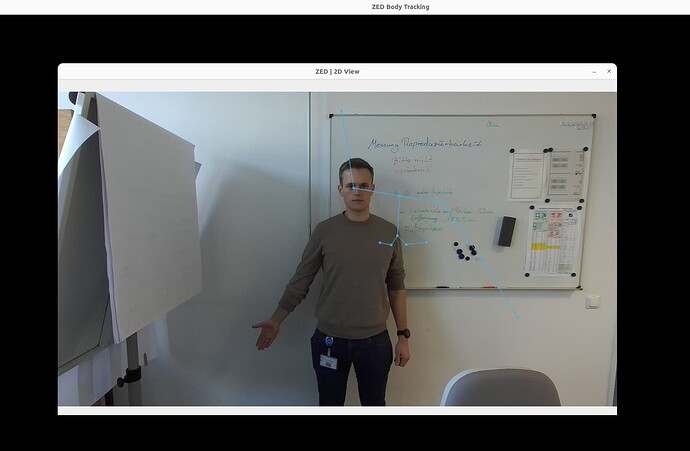Hi,
today I tried to test the step response of the body tracking algorithm. For this I recorded SVO-Data of me with one hand up and another video with the hand down. After this I cutted the videos to the same size and merged them.
Unfortunately, the body tracking sample crashes, when the step happens. More precisely, the video freezes and the skeleton does not fit anymore. After some time and after Linux Ubuntu showed me a Force-Quit-Option (which i did not accepted) the skeleton is back on the body.
Here is a picture of the issue:
And here you can download the SVO I am using:
Hi,
I don’t have any issue while running the Body tracking sample with you svo. Did you use the c++ or python sample? or any other?
Stereolabs Support
Hi Benjamin!
I am using the Python sample on Ubuntu 22.04.1 LTS.
Hardware:
- ASRock B560M-ITX/AC DDR4 Mini-ITX
- Intel Core i5 10400 6x 2.90GHz
- Asus Phoenix GeForce GTX 1650 OC Edition 4GB
- G.Skill Aegis DIMM Kit 16GB, DDR4-3000, CL16
- Samsung SSD 970 EVO Plus 500GB, M.2
ZED Diagnosis is running without any issue.
I changed
init_params.svo_real_time_mode = True
to
init_params.svo_real_time_mode = False
and it seems to work, but the algorithm thinks that there is another person after the jump (skeleton color changes) now. Could there be a better way to detect the max detectable movement speed?
Hi,
The tracking is lost during the jump because there is a big gap between the timestamp of the image before and after the jump.
Stereolabs Support
So merging does not create new timestamps? Sounds strange, because shouldn’t the goal really be to create your own SVOs to test with? My goal here is to find out the maximum detectable speed of the keypoint data, which is why I thought of a step response and a subsequent analysis of the tracking.
